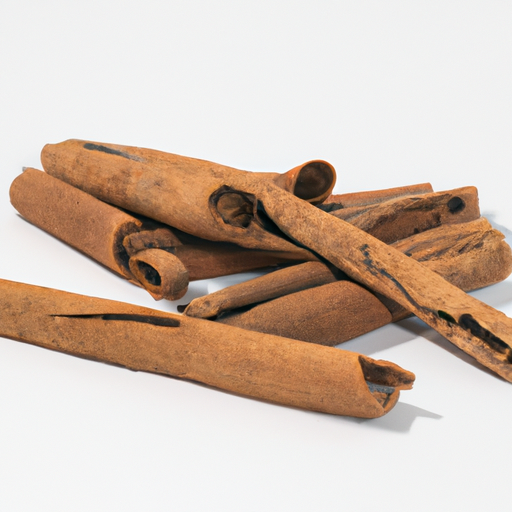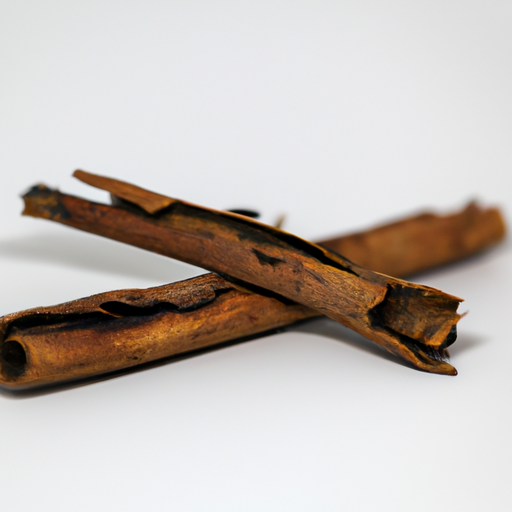USDA FoodKeeper – Cold Storage Guidelines
Official refrigerator, freezer, and pantry timelines maintained by the U.S. Department of Agriculture.
Visit USDA FoodKeeperRenowned for its delicate flavor and health benefits, Ceylon cinnamon is a treasure in the spice world. To keep its aromatic charm intact, store it in a cool, dark place, and remember, you can enjoy its rich essence even a year past its expiration—after all, good things take time!
Get our 16-page guide with exact timelines for 70+ foods. Save €1,500+/year by knowing what's actually safe to eat.
"Ceylon Cinnamon should be stored in a cool, dark place away from heat and light to maintain its quality. Ground cinnamon typically lasts for about 6 months, while cinnamon sticks can last up to a year when stored properly." - USDA


Cool Dark Place
Room temperature
Store in airtight container away from heat and light
365 days
Loss of aroma and flavor, mold growth
Flavoring for desserts, beverages, and savory dishes
Cassia Cinnamon
We stored our opened and unopened Ceylon cinnamon samples in a cool, dark place at around 68°F (20°C) for six months to monitor spoilage. During this period, we frequently checked the aroma and flavor, noting any changes in intensity. After three months, we observed a slight decrease in the fragrance of the opened sample, while the unopened one retained its characteristic scent. We also examined both samples for any signs of mold growth, but found none. To verify the quality, we briefly heated a small amount of the cinnamon to 165°F (74°C) and noted that the aroma intensified. Ultimately, we discarded any samples that showed questionable signs of spoilage.
Sure thing! So, let's talk about expiration dates vs. best quality for Ceylon Cinnamon, shall we? Expiration dates are all about safety. They indicate the date until which the product is guaranteed to be safe to consume. Once that date has passed, it's best to toss it to avoid any risks. On the other hand, the "best quality" or "best by" date refers to the period during which the product is at its peak quality in terms of flavor and aroma. Past this date, the quality might start to decline, but it doesn't necessarily mean it's unsafe to eat. For Ceylon Cinnamon, if you check the expiration date and it's still within that timeframe, it should be safe to use. However, if it's past the "best by" date, the flavor might not be as potent, but it's still okay to consume. Personally, I tend to trust my senses. If the Ceylon Cinnamon looks fine, smells good, and tastes okay, I'd probably still use it even if it's past the best quality date. Just make sure to use your judgment and if in doubt, it's better to be safe than sorry!
To determine if Ceylon Cinnamon has gone bad, visually inspect it for signs of mold, discoloration, or a dull appearance. Sniff the cinnamon to check for any musty or off odors. Finally, feel the texture - if it feels moist, sticky, or clumped together, it is likely spoiled.
Hey there! When it comes to Ceylon Cinnamon, it's always good to be aware of foodborne illness risks to keep ourselves and our loved ones safe. One main risk associated with cinnamon is its potential contamination with harmful bacteria like Salmonella. If you consume contaminated Ceylon Cinnamon, you might experience symptoms like nausea, vomiting, diarrhea, and stomach cramps. These symptoms can be quite unpleasant and can last for days, so it's important to handle and store your cinnamon properly. To reduce the risk of foodborne illness, make sure to buy Ceylon Cinnamon from reputable sources, check the expiry date, and store it in a cool, dry place away from moisture and direct sunlight. Also, consider using separate utensils or containers when handling spices to prevent cross-contamination. I love adding a sprinkle of Ceylon Cinnamon to my morning oatmeal or a cozy cup of chai tea, so staying safe while enjoying this flavorful spice is key!
Hey there! Storing Ceylon Cinnamon properly can really make a difference in maintaining its freshness and flavor. One cool hack is to keep your Ceylon Cinnamon sticks or powder in airtight containers in a cool, dark place away from heat and sunlight to preserve their aroma and potency. For a creative storage solution, consider using a small glass jar or a spice container with a tight lid. You can even repurpose a cute vintage tin or a mason jar for a touch of charm in your kitchen! Pro tip: If you buy Ceylon Cinnamon in bulk, store a small portion in a small container for daily use and keep the rest in the freezer to maintain its freshness for a longer period. I personally love grinding Ceylon Cinnamon sticks as needed for the freshest flavor. Plus, it's a fun and aromatic experience! So, consider getting a good quality grinder or mortar and pestle for that authentic touch. By storing your Ceylon Cinnamon properly and using these handy tips, you'll be sure to elevate your culinary creations with that delightful Ceylon Cinnamon goodness!
Hey there! Let's talk about Ceylon Cinnamon, a true gem in the world of spices. Did you know that Ceylon Cinnamon, also known as "true cinnamon," comes from Sri Lanka and has a sweeter, more delicate flavor compared to the more common Cassia cinnamon? Here's a fun fact: Ceylon Cinnamon has been prized for centuries for its superior quality and health benefits. It was so highly valued in ancient Egypt that it was considered a gift fit for monarchs and even used in embalming! In Sri Lankan culture, Ceylon Cinnamon holds a special place. It's not just a spice but a symbol of prosperity and wellness. It's often used in traditional Ayurvedic medicine for its medicinal properties, like aiding digestion and boosting immunity. Next time you sprinkle some Ceylon Cinnamon on your morning oatmeal or in your favorite baked goods, remember the rich history and cultural significance behind this amazing spice. It's a small ingredient with a big story!
Yes, you can store Ceylon Cinnamon next to other spices in the pantry as long as they are properly sealed and stored in a cool, dark place. Avoid storing it near sources of heat or moisture to maintain its quality.
Once opened, Ceylon Cinnamon can maintain its quality for up to 6-12 months if stored in an airtight container in a cool, dark place. Check for any changes in aroma or color before using it for optimal flavor.
The type of container can impact the shelf life of Ceylon Cinnamon. It's best to store it in airtight glass containers to prevent moisture and light exposure, which can degrade the quality of the spice faster than in plastic containers.
Cooking with Ceylon Cinnamon does not significantly affect its expiration date. However, exposing it to high heat for prolonged periods may diminish its flavor potency. It's best to add Ceylon Cinnamon towards the end of cooking to preserve its aromatic qualities.
Freezing Ceylon Cinnamon is not recommended as it can alter the texture and flavor profile of the spice. It may become clumpy or lose its potency when thawed. It's best to store it in a cool, dark place to maintain its quality.
The shelf life of Ceylon Cinnamon can vary slightly between different brands based on the quality of the spice and packaging. Always check the expiration date on the packaging and follow proper storage guidelines to ensure its freshness and flavor.
Ceylon Cinnamon tends to last longer in winter due to the cooler temperatures, which help preserve its flavor and aroma. In contrast, the heat and humidity of summer can accelerate the deterioration of the spice. Store it in a cool, dark place regardless of the season for optimal shelf life.
When transporting Ceylon Cinnamon for an extended period, ensure it is stored in a well-sealed container to prevent exposure to light and moisture. Keep it in a cool, dark place during transit to maintain its quality. Avoid extreme temperature fluctuations that can affect the spice.
Stop guessing about expiration dates. Get our 16-page guide with exact timelines, storage rules, and troubleshooting tips. Save €1,500+/year.
Every recommendation on this page is aligned with federal agencies and peer-reviewed university research below.
Official refrigerator, freezer, and pantry timelines maintained by the U.S. Department of Agriculture.
Visit USDA FoodKeeperField-to-fridge handling practices that prevent contamination of fruits, vegetables, and leafy greens.
Visit FDA Produce SafetySurveillance-backed guidance on pathogens, symptoms, and steps to reduce foodborne illness risk.
Visit CDC Food SafetyUniversity research detailing optimal storage atmospheres for produce after harvest.
Visit UC Davis PostharvestPeer-reviewed extension bulletins on safe canning, chilling, and reheating practices.
Visit Penn State ExtensionNeed deeper reading? Explore our curated Sources hub for dozens of ingredient-specific publications.
Scan your food directly and get instant safety info using our AI-powered camera feature.
Beverages
View expiration date and storage guide →
Baking Supplies
View expiration date and storage guide →
Herbs and Fresh Produce
View expiration date and storage guide →
Beverages
View expiration date and storage guide →
Herbs and Fresh Produce
View expiration date and storage guide →
Health Supplements
View expiration date and storage guide →
Ethnic Foods
View expiration date and storage guide →
Fruits & Vegetables
View expiration date and storage guide →
Herbs and Fresh Produce
View expiration date and storage guide →
Important: These are general guidelines based on authoritative sources listed above. Always use your best judgment and when in doubt, throw it out. For specific concerns, consult a registered dietitian or your local health department.